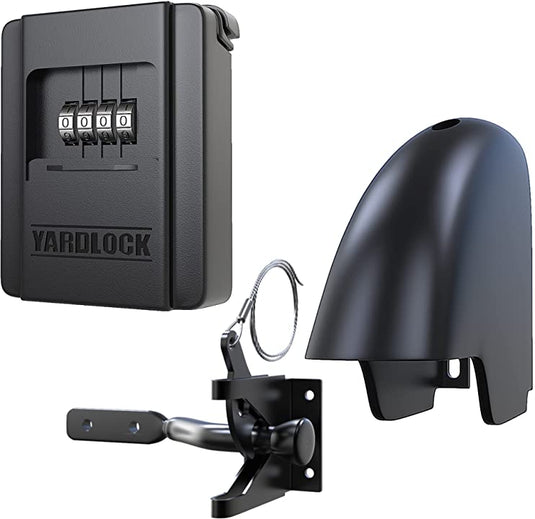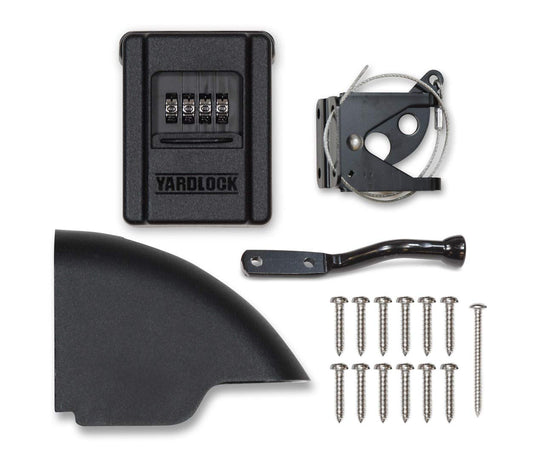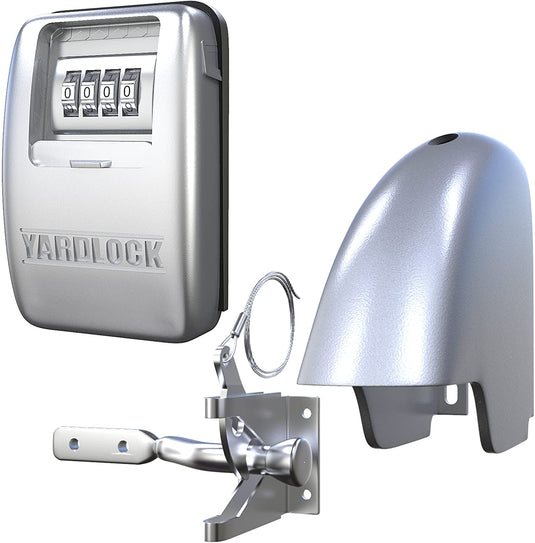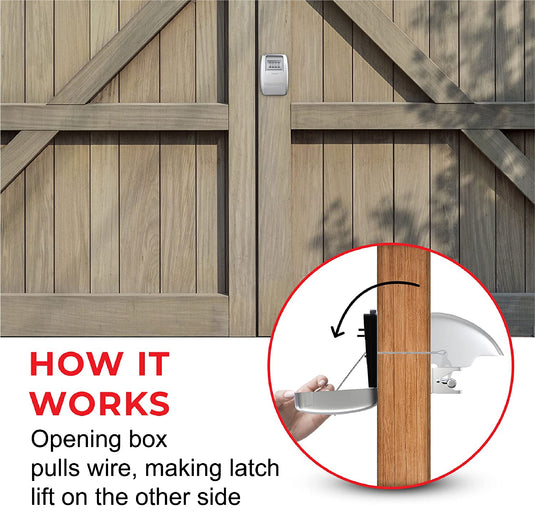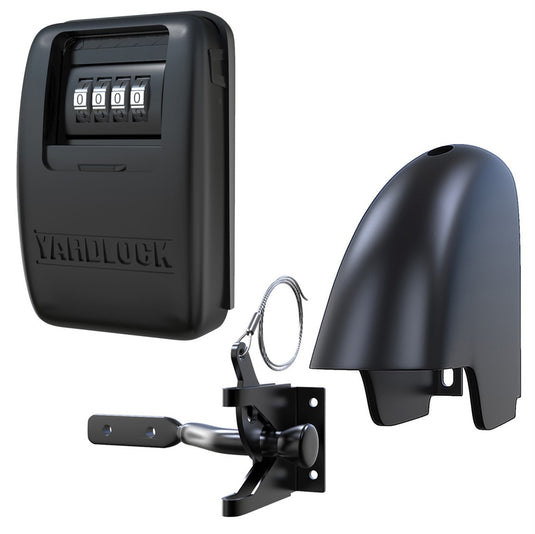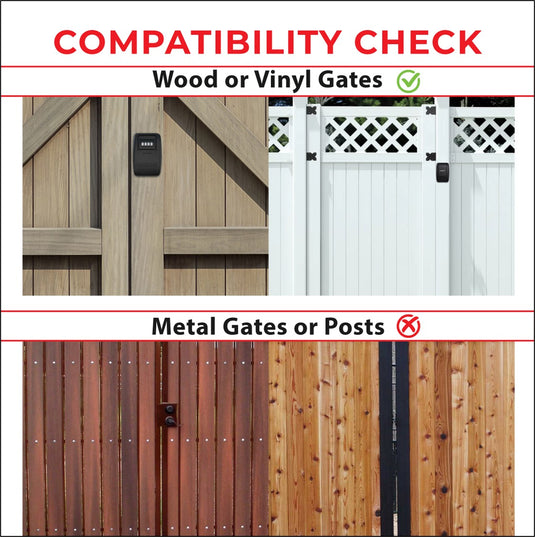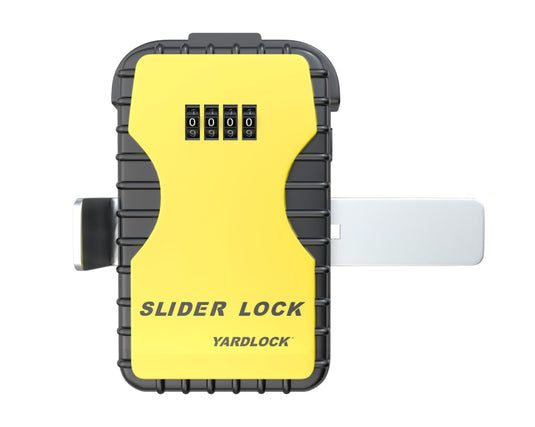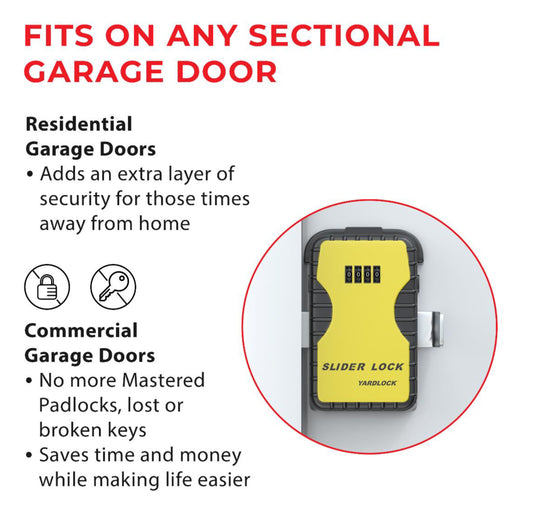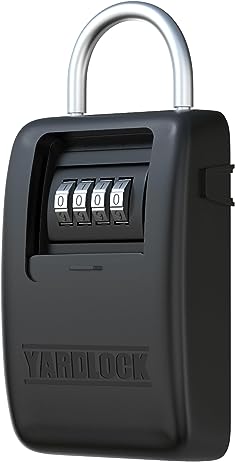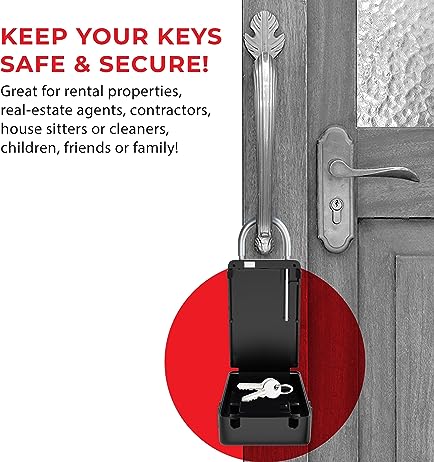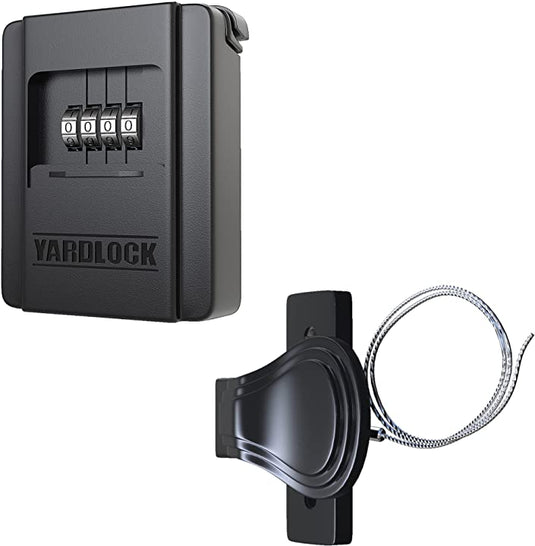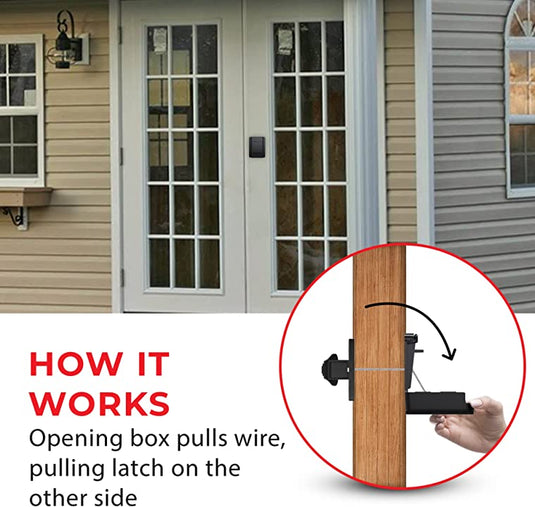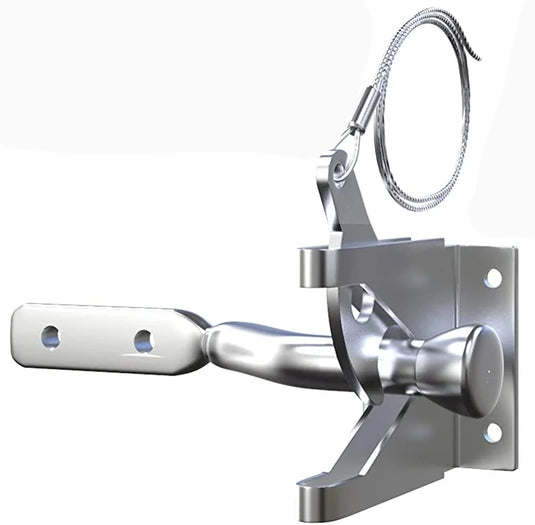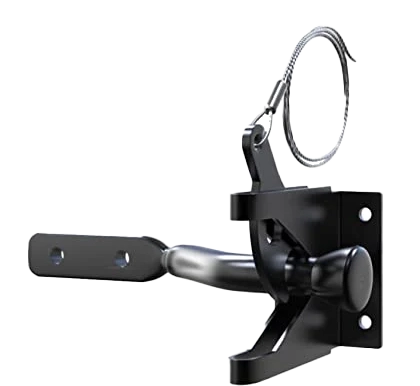Vinyl Fence Gates: The Right Keyless Lock & Install Height (Step-by-Step Guide)
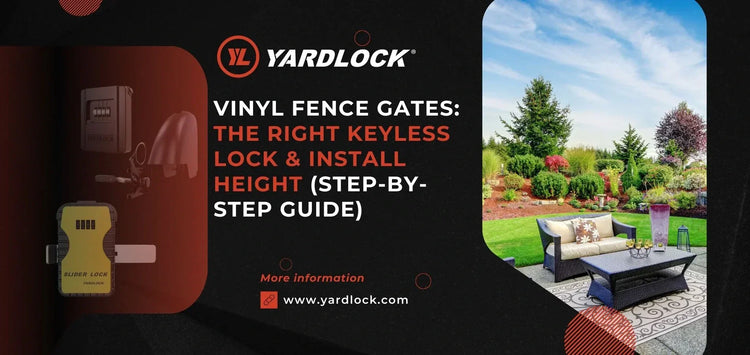
Vinyl fencing has become one of the most popular choices for homeowners who want a durable, low-maintenance, and stylish way to secure their backyard or pool area. But while vinyl panels are easy to clean and last for decades, the gate is always the weak spot—especially when it comes to locks and latches.
If you’ve ever struggled with a flimsy latch that doesn’t line up or a rusty padlock that sticks, you know how frustrating gate security can be. That’s where keyless locks for vinyl gates make a huge difference. They provide reliable security, child and pet safety, and peace of mind, without the hassle of keys or batteries.
In this step-by-step guide, we’ll cover:
-
Why vinyl fence gates need the right type of lock.
-
How to choose the best keyless lock for vinyl.
-
The correct installation height to meet safety and pool codes.
-
A step-by-step installation guide.
-
Maintenance tips to keep your lock secure for years.
Why Vinyl Fence Gates Need the Right Lock
Vinyl fences are sturdy and long-lasting, but their gates pose unique challenges:
-
Flex and Sagging – Vinyl isn’t as rigid as wood or metal. Gates can shift slightly over time, causing latches to misalign.
-
Child & Pet Safety – A weak latch makes it easy for kids or pets to push through.
-
Pool Safety Codes – If you’re enclosing a pool, you’re required by law to have a self-latching lock at a specific height.
-
Weather Resistance – Standard locks rust quickly, but vinyl gates deserve a lock that can withstand sun, rain, snow, and humidity.
The solution: a keyless mechanical gate lock that fits vinyl posts, works in all weather, and meets safety codes.
Best Keyless Lock Options for Vinyl Fence Gates
When choosing a lock for a vinyl gate, you’ll want one that’s weather-resistant, durable, and easy to install. YARDLOCK offers several models that fit perfectly on vinyl posts:
1. Standard YARDLOCK Gate Lock
-
Best for residential backyards with standard vinyl gates.
-
Affordable and easy to install.
-
Keyless 4- digit combination system.
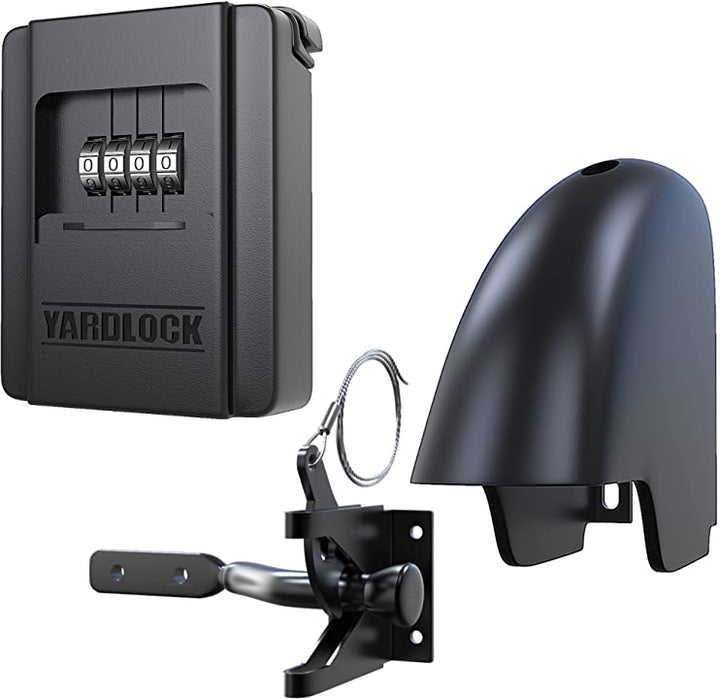
2. XLB (Extra Large Bracket Model)
-
Designed for wider or oversized vinyl posts.
-
Perfect for composite or double gates.
-
Stronger bracket ensures long-term alignment.
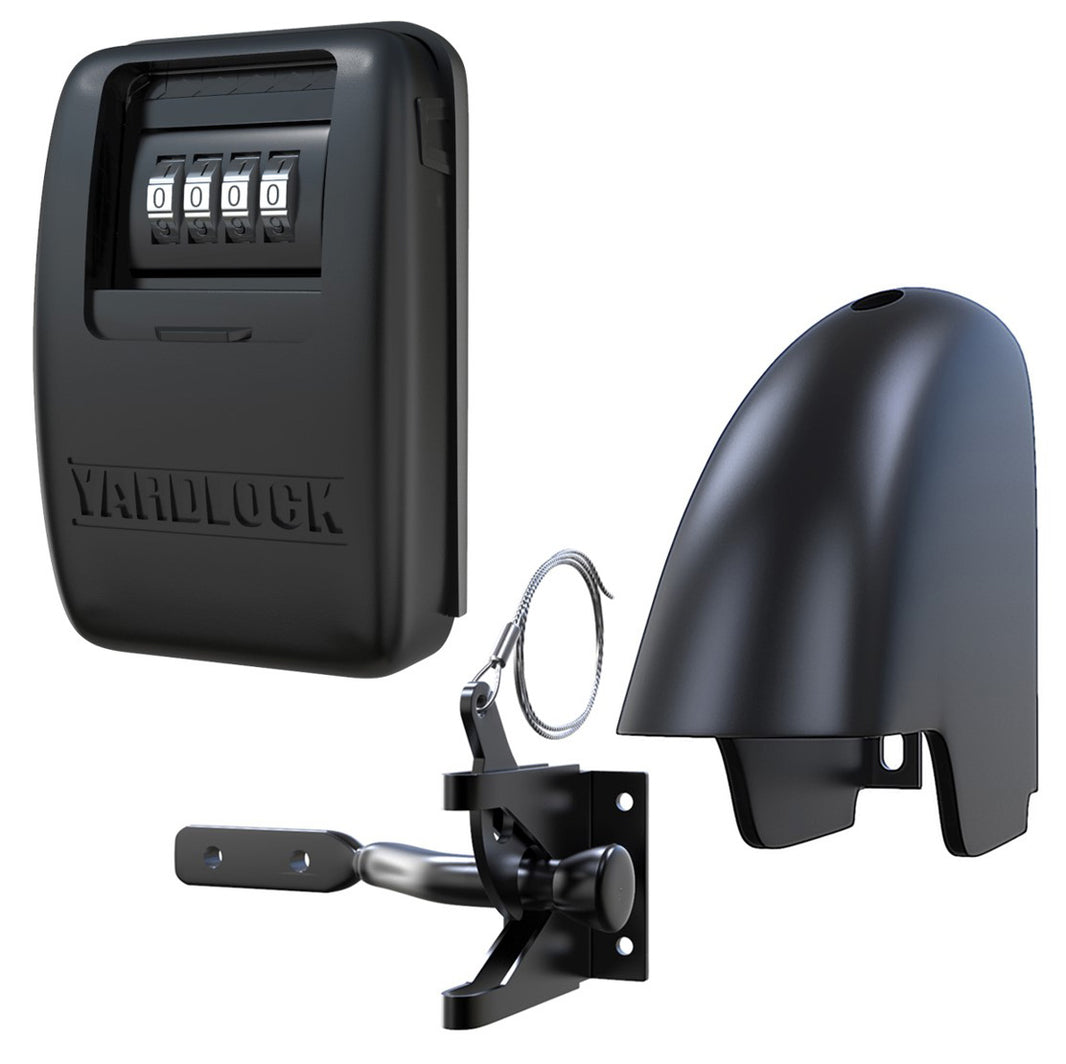
3. XLS Stainless Steel Model
-
Best choice for humid, coastal, or snowy regions.
-
Stainless steel resists corrosion and rust.
-
Long-lasting with minimal maintenance.

The Correct Install Height for Vinyl Gate Locks
Installing your gate lock at the right height is critical for both safety and compliance.
Standard Recommendations:
-
General Backyard Gates → Mount the lock at 42–48 inches (waist height for adults, convenient for daily use).
-
Pool Gates (U.S.) → Most codes require latch release at 54 inches above ground to prevent children from reaching it.
-
Pool Gates (Canada) → Typically 1.2–1.35 meters (48–54 inches), depending on provincial or municipal bylaws.
Always check your local building or pool code before installation. Installing too low could make your lock non-compliant.
Step-by-Step Guide: Installing a Keyless Lock on a Vinyl Gate
Installing a YARDLOCK on a vinyl fence gate is a straightforward DIY project. Here’s how to do it:
✅ Tools You’ll Need
-
Drill + bits
-
Measuring tape
-
Pencil or marker
-
Screwdriver
-
Level
Step 1: Measure & Mark the Height
-
Decide whether your lock is for general use (42–48”) or pool compliance (54”).
-
Use a measuring tape and mark the exact height on your vinyl gate post.
-
Double-check alignment with the strike plate on the opposite post.
Step 2: Drill Pilot Holes
-
Hold the mounting bracket against the post.
-
Mark the screw holes with a pencil.
-
Drill pilot holes carefully—vinyl can crack if you apply too much pressure.
Step 3: Attach the Lock Body
-
Secure the main lock body to the gate post using the provided screws.
-
Use a level to ensure it’s perfectly straight.
Step 4: Install the Latch/Strike Plate
-
Close the gate and position the strike plate on the opposite post.
-
Mark and drill pilot holes.
-
Attach the strike plate so the lock engages smoothly when the gate shuts.
Step 5: Test the Mechanism
-
Open and close the gate several times.
-
Ensure the lock self-latches and lines up correctly.
-
Adjust screws if the alignment feels too tight or loose.
Step 6: Add Optional Reinforcement
-
For heavy vinyl gates, consider adding metal reinforcement brackets inside the vinyl post.
-
This prevents sagging and keeps the lock aligned long-term.
Maintenance Tips for Vinyl Gate Locks
Even though vinyl is low-maintenance, your gate lock needs some care:
-
Seasonal Lubrication – Spray the lock mechanism with graphite or silicone lubricant every 3–4 months.
-
Check Alignment – Vinyl gates expand in heat and contract in cold. Adjust hinges if needed.
-
Rinse After Storms – If you live near the coast, rinse the lock with fresh water to remove salt.
-
Tighten Screws – Check twice a year to prevent loosening from gate movement.
Why Choose Keyless Over Traditional Locks
Traditional padlocks and keyed latches have several downsides for vinyl gates:
-
Keys can rust, bend, or get lost.
-
Padlocks often corrode in rain or coastal air.
-
Children may figure out simple slide-bolt latches.
Keyless locks solve these problems by being:
-
Mechanical and weatherproof.
-
Battery-free, unlike electronic smart locks.
-
Self-latching for improved safety.
-
Universal fit for vinyl, wood, or metal gates.
FAQs: Vinyl Fence Gate Locks
What’s the best lock for vinyl fence gates?
For most homes, the Standard YARDLOCK works well. For oversized vinyl posts, go with the XLB, and for coastal or snowy climates, choose the XLS Stainless Steel model.
How high should a lock be installed on a pool gate?
Most U.S. codes require 54 inches above ground, while Canadian codes specify 1.2–1.35 meters. Always check your local regulations.
Can I install a YARDLOCK on my vinyl gate myself?
Yes. YARDLOCKs are designed for DIY installation with basic tools.
Do keyless locks rust on vinyl gates?
The XLS Stainless Steel model is rust-resistant and built for coastal or humid environments. Standard models are also weather-resistant but may need more maintenance in salty air.
Do these locks work on double vinyl gates?
Yes. For double swing vinyl gates, the XLB model provides extra strength and fit.
Final Thoughts
Vinyl fence gates are beautiful, durable, and low-maintenance—but without the right lock, they can be a weak point in your security. By choosing a keyless lock designed for vinyl gates and installing it at the correct height, you’ll ensure safety, convenience, and code compliance.
Whether you’re securing a backyard, pool, or driveway, the right YARDLOCK model (Standard, XLB, or XLS) provides peace of mind without the hassle of keys or batteries.

